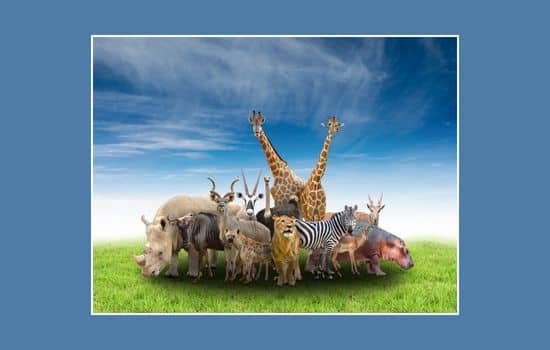Advertisements
The animal kingdom, also known as Animalia, is a vast and diverse set of organisms that share fundamental characteristics.
But they exhibit a wide variety of shapes, sizes and behaviors.
Advertisements
In this article, we'll dive into the fascinating classification of the animal kingdom, exploring the major taxonomic categories and the incredible diversity of life they host.
The Classification of the Animal Kingdom
The classification of the animal kingdom is based on a hierarchical system that organizes organisms into increasingly specific groups.
Advertisements
See also
Exploring the Fascinating World of Angiosperm Plants
The main taxonomic categories, in descending order, are:
- Kingdom: The animal kingdom, or Animalia, is the highest level of classification and includes all heterotrophic multicellular organisms that obtain nutrients by consuming other organisms.
- EdgeAnimals are divided into phyla, which group organisms with similar anatomical, physiological, and evolutionary characteristics. Some examples of animal phyla include chordates (Chordata), arthropods (Arthropoda), and mollusks (Mollusca).
- ClassWithin each phylum, organisms are divided into classes based on specific shared characteristics. For example, within the phylum Chordata, the class Mamalia includes mammals, while the class Aves includes birds.
- Order: Classes are further subdivided into orders, which group organisms with more specific characteristics. For example, within the class Mammalia, the order Carnivora includes carnivores such as lions and tigers, while the order Rodentia includes rodents such as mice and rats.
- Family: Orders are divided into families, which group organisms with even more similar characteristics. For example, within the order Carnivora, the family Felidae includes felines such as cats and leopards.
- GenderFamilies are further subdivided into genera, which group together even more closely related organisms. For example, within the family Felidae, the genus Panthera includes big cats such as lions, tigers, and leopards.
- Species: Species is the basic unit of classification and refers to a group of organisms that can interbreed and produce fertile offspring. For example, Panthera leo refers to the African lion, while Panthera tigris refers to the tiger.
The Incredible Diversity of the Animal Kingdom
The animal kingdom is home to an astonishing variety of life, from microorganisms invisible to the naked eye to giant mammals and majestic birds.
Some of the more prominent animal groups include:
- InvertebratesInvertebrates are animals that lack a backbone and represent the vast majority of animal diversity. They include arthropods such as insects, arachnids and crustaceans, as well as mollusks such as snails, octopuses and clams.
- Fish: Fish are aquatic vertebrates that breathe through gills and reproduce by laying eggs. They include a wide variety of forms, from small, brightly colored fish to sharks and rays.
- Amphibians: Amphibians are vertebrates that spend part of their lives in water and part on land. They include frogs, toads, salamanders and Cecilias.
- ReptilesReptiles are vertebrates that have scales and reproduce by laying eggs. They include lizards, snakes, turtles and crocodiles.
- BirdsBirds are vertebrates with feathers, horny beaks, and bodies adapted for flight. They include birds of all sizes and shapes, from tiny hummingbirds to large birds of prey.
- MammalsMammals are vertebrates that are characterized by having mammary glands and hair on their bodies. They include terrestrial mammals such as elephants, lions and bears, as well as aquatic mammals such as whales and dolphins.
How Animal Kingdom Species Help Nature
Species of the animal kingdom play vital roles in natural ecosystems:
- Pollination: Many insects, birds and mammals help in the pollination of plants by transporting pollen from one flower to another, allowing for the production of fruits and seeds.
- Pest Control: Many animals, such as bats, birds of prey and amphibians, feed on insects and other organisms considered agricultural pests, helping to maintain balance in ecosystems and reducing the need for pesticides.
- Decomposition: Decomposer organisms, such as insects, worms, and bacteria, help break down dead organic matter, releasing nutrients into the soil and contributing to nutrient cycling.
- Feeding and Seed Distribution: Many animals feed on fruits and disperse the seeds through their droppings, helping germination and dispersal of new plants.
- Role in the Food Chain: Animals occupy different trophic levels in food chains and food webs, serving as prey for other organisms and as predators that control prey populations.

Conclusion: Celebrating the Wonder of the Animal Kingdom
The animal kingdom is a treasure trove of biological diversity that sustains life on Earth in all its forms.
From tiny microorganisms to majestic mammals, each species plays a unique and valuable role in natural ecosystems.
By understanding and appreciating the classification of the animal kingdom, we can develop a greater respect for the incredible variety of life around us and work together to protect and conserve this precious natural heritage.




